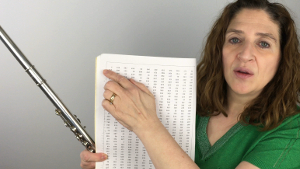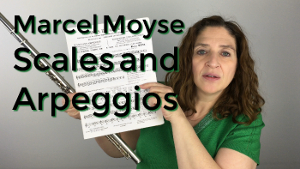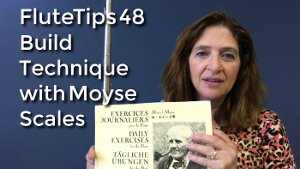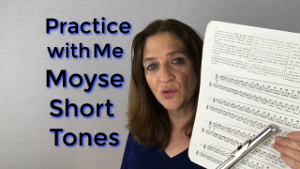In any flute journey there is always room to add something new. Anyone is bound to get bored with their routine after a certain amount of time. New exercises to work on the same old problems are always welcome in my book. With that in mind I want to bring up Marcel Moyse’s book called Scales and Arpeggios or Gammes Arpeggiones,
I stumbled upon this book one year at a flute convention in my grad school days. I’d been using my technique books: Taffanel and Gaubert’s 17 Grand Exercises for the Flute and Marcel Moyes’s book Daily Exercises for a long time. They’re good books from which I learned a lot. However, I knew I needed something else to practice.
But I wasn’t looking for just another technique book!
I wanted something else. Something that was not merely scales, but offered more variety and interaction with the keys. So, I bought this book on a whim and have since fallen in love with this book.
If you don’t have it, you need to go out and get it because it is a fantastic book. It gives you so much variety covering all the different keys with such a variety in scales and arpeggios in such an interesting way that I never ever get bored with this practice book.
This book is even put together in a different way too. You can go through and play the exercises page by page, or you can follow the schedule written inside the first page. There is no set way to use this plan. But if you follow across the top line, the exercises performed will continue in a similar key structure – but with amazing variety.

I love playing across this schedule. I don’t have to stay with one so long that I’m bored with it. I can play one exercise as many times as I want, then continue on to the next one. My plan is to play one line of these exercises for a week. I will play all the exercise across the line each time I practice. Then the next week, I will move down to the next line. If you were to look at my book you would see that I have some arrows pointing to each line which are put there for me to keep track of the exact line I’m working on for that week. At first you think it’s easy to keep track of what line your are on but 10 weeks in you will be asking yourself which line you played last!
This book will change your practice!
Some of the exercises in this book are very difficult and they cause any number of problems. This makes me hate working on it! But then again I love working on it! Because it helps my fingers in some way that I didn’t know I was having problems with.
At some point, when I’ve learned it well enough, I will put a metronome on and see if I can maintain the tempo. Let me tell you that if you put a metronome on and try do all the exercises in the row at that tempo it is a challenge! Some of these exercises can really make your fingers work.
Go get to this book, try working all the way through the schedule following a line at a time for a week before you move on to the next one. See if you feel the changes that will make your fingers move better, train your muscles, and help your sight reading reading.
I think you’ll enjoy working on these exercises. It will give you variety from your normal routine.
This book will change your practice!
DoctorFlute
Watch my video explaining this: FluteTips 95 Marcel Moyse Scales and Arpeggios

FluteTips 72 Rich Expansive Low Register

FluteTips 53 Moyse Short Tones

FluteTips 48 Building Your Technique by Practicing Moyse Scales

Practice with Me Moyse Short Tones

